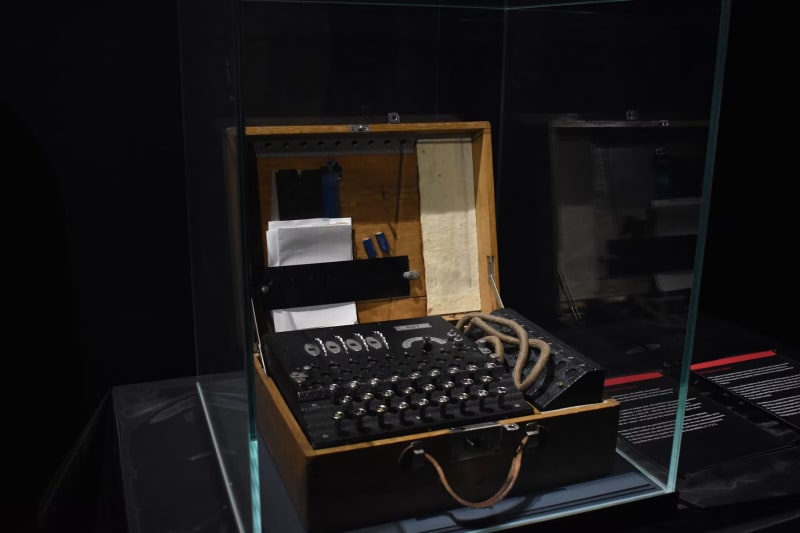In the early hours of September 1, 2025, something unprecedented happened at Jaguar Land Rover: every production line fell silent. From the sprawling factories in Solihull to the Halewood plant in Merseyside, not a single Range Rover rolled off the assembly line. The culprit? A sophisticated cyberattack that would become one of the automotive industry’s most costly security breaches.
Six weeks later, with losses estimated at £1.5 billion and a government bailout in place, JLR’s ordeal offers crucial lessons for every manufacturer navigating today’s threat landscape.
The Perfect Storm: Timing Makes Everything Worse
The attack couldn’t have come at a worse time. September 1st—known in the UK as “New Plate Day”—is traditionally one of the busiest sales days for car dealers, when customers rush to register vehicles with the latest license plate designations. According to BBC News, JLR dealers found themselves unable to register or deliver vehicles, watching helplessly as potential sales evaporated.
“It was immediately clear this wasn’t a typical IT glitch,” says one supply chain manager who spoke on condition of anonymity. “When dealers couldn’t access systems on the biggest sales day of the year, we knew something catastrophic had happened.”
JLR’s response was drastic but necessary: a complete global shutdown of IT systems. Manufacturing operations ceased at facilities across the UK, Slovakia, China, and India. The message was clear—contain first, investigate later.
The Attackers: A Hacker Collective with a Grudge
Within days, a Telegram channel calling itself “Scattered Lapsus$ Hunters” claimed responsibility, posting screenshots of JLR’s internal systems as proof. The name itself is revealing—a mashup of three notorious hacking groups: Scattered Spider, Lapsus$, and ShinyHunters, collectively known as “the Com.”
CYFIRMA’s detailed investigation revealed this wasn’t JLR’s first rodeo with cybercriminals. In March 2025, the HELLCAT ransomware group had already breached JLR’s networks using stolen Jira credentials, exfiltrating 700 internal documents, source code, and employee data. The September attack appeared to exploit lingering access from that earlier breach.
“The attackers likely retained network access from the March compromises,” explains Chris Gibson, executive director of FIRST (Forum of Incident Response and Security Teams), as reported by Dark Reading. “They picked the worst possible time to cause maximum disruption—’New Plate Day,’ one of the busiest sales days.”
The Technical Breakdown: How They Got In
The attack vector, while not officially confirmed by JLR, followed a pattern security researchers recognize all too well:
Initial Access
Threat intelligence firm CYFIRMA identified that attackers exploited a well-known flaw in SAP NetWeaver, third-party software used by JLR. The US Cybersecurity and Infrastructure Security Agency (CISA) had warned about this vulnerability earlier in 2025, and an update had been released. Whether JLR applied the patch remains unknown.
The Kill Chain
ExtraHop’s analysis mapped the attack to several MITRE ATT&CK techniques:
- Initial Access (T1190): Exploitation of public-facing application (likely the SAP NetWeaver vulnerability)
- Credential Access (T1078): Use of valid accounts from the March breach
- Lateral Movement (T1021): “Living off the land” tactics using PowerShell and RDP
- Defense Evasion (T1564.004): Abusing native system tools to avoid detection
- Impact (T1489): Service stop across manufacturing operations
The attackers demonstrated sophisticated understanding of JLR’s infrastructure, accessing internal domains like jlrint.com and even exposing infotainment system debug logs—showing they had penetrated not just IT, but operational technology (OT) systems controlling vehicle manufacturing.
The Cost: More Than Just Money
Financial Devastation
- £50 million per week in lost production
- 21,138 fewer vehicles produced in a single quarter
- Total estimated losses: £1.5 to £2.4 billion
- Government-backed £1.5 billion loan guarantee required to stabilize operations
According to Autocar, JLR normally produces over 1,000 vehicles daily. Six weeks of shutdown meant approximately 42,000 vehicles never made it to customers.
The Human Toll
More than 30,000 JLR employees were sent home. But the ripple effects reached far wider. Around 100,000 people work for firms in JLR’s UK supply chain—many small and medium-sized businesses with no financial cushion for extended shutdowns.
“We’re already seeing employers having discussions on potential redundancies,” Jason Richards, West Midlands regional officer at Unite the union, told BBC News. “People have to pay rent, they have to pay mortgages. If they’re not getting any pay, what are they supposed to do?”
Some suppliers, particularly those providing parts exclusively to JLR, faced bankruptcy without government intervention.
The Long Road to Recovery
JLR’s recovery wasn’t a simple matter of flipping switches. The company had to ensure attackers were completely eradicated before restarting production.
Phased Restart Timeline
- October 2: Engine plant in Wolverhampton restarts (5 weeks after attack)
- October 7: Range Rover/Sport lines at Solihull resume
- October 10: Halewood plant producing Evoque and Discovery Sport
- October 16: All UK production lines operational
- Late October: International facilities in Slovakia, China, India, and Brazil gradually restart
Even by mid-October, as The Independent reported, production remained at limited capacity as JLR implemented a “controlled, phased restart” to ensure systems were secure.
Data Breach: The Other Shoe Drops
Initially, JLR stated confidently that no customer data had been compromised. That position shifted dramatically on September 10, when the company admitted to BBC that “some data has been affected.”
The company informed the Information Commissioner’s Office (ICO) and committed to contacting affected individuals. While JLR hasn’t specified exactly what data was taken—whether customer, supplier, or proprietary information—the admission raised serious questions about the extent of the breach.
Professor Ciaran Martin, former boss of the National Cyber Security Centre, offered a sobering perspective: “There’s a real difference between someone photocopying your bank records and being punched in the face and having your legs broken.” For JLR, this was both—data theft and operational paralysis.
The Bigger Picture: Automotive Industry Under Siege
JLR’s nightmare isn’t an isolated incident. The automotive sector has become a prime ransomware target:
- 2017: Honda shut down production due to WannaCry
- 2020: Honda again paused manufacturing following a different cyberattack
- 2022: Toyota and General Motors faced breaches
- 2023: Nissan and Ferrari hit by cyberattacks
- 2024: Hyundai Motor Europe targeted
- 2025: JLR, Tesla supplier Visser Precision, and others
Dark Reading reports that about half of the top-100 automobile manufacturers are highly susceptible to ransomware attacks.
Why? Because automakers present an attractive target:
- High-value operations with thin profit margins on production halts
- Complex IT/OT convergence creating multiple attack surfaces
- Just-in-time manufacturing leaving no buffer for disruption
- Vast supply chains with variable security standards
Five Critical Lessons for Manufacturers
1. Network Segmentation Is Non-Negotiable
JLR’s attackers moved from IT systems into operational technology controlling production lines. Proper network segmentation with strict access controls between IT and OT could have contained the breach.
2. Patch Management Saves Millions
If the SAP NetWeaver vulnerability was indeed the entry point, and if a patch was available but not applied, this breach cost £1.5 billion because of deferred maintenance. There’s no such thing as “too busy to patch” when ransomware groups are actively scanning for known vulnerabilities.
3. Assume Breach, Verify Trust
The March HELLCAT breach should have triggered a comprehensive threat hunting exercise. Instead, attackers likely maintained persistent access for six months, learning the network and planning their September strike. Zero-trust architecture and continuous monitoring are essential.
4. Test Your Incident Response Plan
JLR had to shut down globally because it couldn’t quickly determine the extent of the compromise. Regular tabletop exercises and red-team simulations help organizations respond faster and with more precision, potentially limiting damage.
5. Supply Chain Resilience Requires Partnership
The UK government’s £1.5 billion loan guarantee wasn’t just about JLR—it was about preventing cascading bankruptcies across the automotive supply chain. Manufacturers must work with suppliers to improve collective cybersecurity posture.
The Role of Advanced Detection
ExtraHop’s analysis highlights what traditional security tools missed. The attackers used “living off the land” techniques—abusing legitimate system tools like PowerShell and RDP to avoid triggering antivirus or endpoint detection systems.
Network Detection and Response (NDR) tools that monitor network behavior rather than looking for known malware signatures can detect:
- Unusual lateral movement patterns
- Abnormal data staging before exfiltration
- Reconnaissance scanning
- Privilege escalation attempts
“Prevention is critical, but resilience determines the scale of impact,” Gibson emphasizes. “Manufacturers should focus on building systems that can withstand and recover from inevitable breaches.”
Government Response and Industry Implications
The UK government’s intervention—a £1.5 billion loan guarantee—underscores the national security implications of critical infrastructure attacks. Business Secretary Peter Kyle stated the loan would “help support the supply chain and protect skilled jobs in the West Midlands, Merseyside and throughout the UK.”
This sets a precedent. When a single manufacturer’s cybersecurity failure threatens 100,000+ jobs and an entire regional economy, government support becomes necessary. But it also raises questions: Should companies face stricter cybersecurity regulations? Should supply chain security be mandated?
What Comes Next for JLR
As of late October 2025, JLR is operating again, but the scars remain. The company faces:
- Reputational damage: Customer trust must be rebuilt
- Regulatory scrutiny: Investigations continue with ICO and law enforcement
- Insurance claims: The financial recovery will take years
- Operational changes: Cybersecurity infrastructure overhaul required
Luis Vara, JLR’s global manufacturing director, struck an optimistic note when production restarted: “There is a strong sense of unity and momentum as we get back to doing what we do best—building quality luxury vehicles for our customers.”
But David Roberts, chair of supplier Evtec Group, reminded everyone of the real villain: “We should not forget who is to blame here. All of this is the fault of criminals. JLR is the victim.”
The Verdict: A Wake-Up Call for Industry
The JLR cyberattack represents a watershed moment for manufacturing cybersecurity. The scale of disruption, the sophistication of attackers, and the devastating financial impact demonstrate that traditional security approaches are no longer sufficient.
For CISOs and security teams across the automotive and manufacturing sectors, the message is clear:
- Invest in network visibility and behavioral analytics to detect stealthy attackers
- Segment IT from OT with strict access controls and monitoring
- Implement zero-trust architecture that assumes breach and verifies continuously
- Test incident response plans regularly with realistic scenarios
- Engage with supply chain partners on collective cybersecurity improvement
- Prioritize patch management as a business-critical function
- Build resilience alongside prevention—assume you will be breached
The automotive industry has entered a new era where cybersecurity isn’t just about protecting data—it’s about protecting the ability to manufacture products, deliver to customers, and keep tens of thousands employed.
JLR survived, but barely. The next target may not be so fortunate without fundamental changes to how manufacturers approach cybersecurity.
Sources & Further Reading
- BBC News: JLR to resume manufacturing after cyber-attack
- BBC News: JLR could face disruption until November
- BBC News: JLR admits hackers may have taken data
- Autocar: Production at all JLR plants back online
- Dark Reading: JLR Shows Cyberattacks Mean Bad Business
- CYFIRMA: Investigation Report on JLR Cyberattack
- ExtraHop: Ransomware Hits JLR Supply Chain
- The Independent: JLR resumes production




